Ozempic Price in Europe | Ozempic Online kopen Nederland
What Is Ozempic?
Ozempic (semaglutide) is a drug that’s used in people with type 2 diabetes. Ozempic is given as an injection under your skin.
Ozempic can be prescribed to adults with type 2 diabetes to:
- lower certain risks in people who also have heart disease, including heart attack and stroke.
- help manage blood sugar levels, along with lifestyle improvements in diet and exercise.
To learn more about Ozempic’s approved uses, see “What is Ozempic used for?” below.
Doctors may also prescribe Ozempic off-label for weight loss or weight management. (With off-label use, a drug that’s approved for certain conditions is prescribed for another purpose.) For details, see “Wordt Ozempic gebruikt voor gewichtsverlies?” below.
Ozempic basics
Ozempic contains the active ingredient semaglutide. (An active ingredient is what makes a drug work.) It belongs to a class of drugs called glucagon-like peptide-1 receptor agonists.
Ozempic is a brand-name medication that’s not currently available in generic form.
Boxed warning: Risk of thyroid cancer
Ozempic has a boxed warning Trusted Source, which is a serious warning from the Food and Drug Administration (FDA).
The FDA issued this boxed warning because Ozempic has been shown to cause thyroid tumors and thyroid cancer in animals. It isn’t known if Ozempic can cause thyroid tumors or medullary thyroid cancer in humans. If you have a family or personal history of medullary thyroid cancer or a rare endocrine condition called multiple endocrine neoplasia syndrome type 2, you should not take Ozempic.
Neem contact op met uw arts als u een van deze aandoeningen heeft of als deze in uw familie voorkomen.
For more information, see the “What are Ozempic’s side effects?” section below.
Wordt Ozempic gebruikt voor gewichtsverlies?
Ozempic is not approved by the Food and Drug Administration (FDA) for use as a weight management medication. But you might lose weight while you’re taking Ozempic. That’s because the medication decreases your appetite.
In some cases, Ozempic is prescribed off-label for weight management, though this isn’t likely. (With off-label use, a drug that’s approved for certain conditions is prescribed for another purpose.) It’s more likely that your doctor would prescribe Wegovy, which contains the same active ingredient* as Ozempic, called semaglutide. Wegovy is FDA-approved to be prescribed for weight management.
Het is mogelijk dat de verzekering off-label gebruik van Ozempic niet dekt. Vraag uw arts om meer informatie.
Als u geïnteresseerd bent in het gebruik van semaglutide voor gewichtsbeheersing, neem dan contact op met uw arts. Zij kunnen u helpen bepalen welke medicatie het beste voor u is en of het passend is om Ozempic off-label voor te schrijven.
Hoe Ozempic werkt voor gewichtsverlies
Ozempic helpt u op een aantal manieren af te vallen:
- Het vertraagt hoe snel uw maag leeg raakt na het eten. Dit vertraagt uw spijsverteringsproces en kan ervoor zorgen dat u zich langer vol voelt.
- Het medicijn bootst een hormoon na genaamd GLP-1 dat uw lichaam van nature produceert. Dit hormoon verhoogt het gevoel van verzadiging (een vol of voldaan gevoel na het eten).
These effects can also decrease your appetite. For details about how Ozempic works, you can refer to the “How does Ozempic work?” section just below.
Is Ozempic veilig en effectief voor gewichtsverlies? Hoeveel gewicht kan ik verliezen met Ozempic?
Zolang u Ozempic gebruikt zoals uw arts het voorschrijft, zou het veilig moeten zijn om het te gebruiken voor gewichtsverlies.
The amount of weight you might lose during Ozempic treatment depends on a variety of factors, including how long you use Ozempic and what your diet and exercise routine is like. It also depends on how your body responds to the drug.
For more information about Ozempic’s effectiveness for weight loss, you can refer to this comprehensive article about Ozempic for weight loss. You can also talk with your doctor. They can discuss Ozempic’s studies in more detail, and how your lifestyle might affect your weight management treatment.
* Een actief ingrediënt zorgt ervoor dat een medicijn werkt.
Hoe werkt Ozempic?
Ozempic werkt op verschillende manieren om de bloedsuikerspiegel te verlagen bij mensen met type 2-diabetes. Het medicijn verlaagt ook hartgerelateerde risico's bij mensen met zowel diabetes als hartaandoeningen.
Het medicijn doet dit door:
- Increasing the amount of insulin your body makes after a meal so that your blood sugar levels won’t get too high. Insulin is a hormone that lowers your blood sugar levels.
- Het vertragen van de beweging van voedsel door uw maag om een grote stijging van uw bloedsuikerspiegel te voorkomen.
- Het verlagen van de hoeveelheid suiker die in uw bloedbaan vrijkomt.
Uw arts of apotheker kan u informatie geven over de werking van Ozempic in het lichaam.

Wat zijn de bijwerkingen van Ozempic?
Zoals de meeste geneesmiddelen kan Ozempic milde of ernstige bijwerkingen veroorzaken. In de onderstaande lijsten worden enkele van de meest voorkomende bijwerkingen beschreven die zijn gemeld bij Ozempic. Deze lijsten bevatten niet alle mogelijke bijwerkingen.
Uw arts of apotheker kan u meer vertellen over de mogelijke bijwerkingen van Ozempic. Ze kunnen ook manieren voorstellen om de bijwerkingen te helpen verminderen.
Milde bijwerkingen
Hier is een korte lijst van enkele van de milde bijwerkingen die zijn gemeld bij Ozempic. Neem voor meer informatie over andere milde bijwerkingen contact op met uw arts of apotheker.
Milde bijwerkingen van Ozempic kunnen zijn:
- constipatie
- diarree
- misselijkheid
- buikpijn
- braken
Milde bijwerkingen van veel medicijnen kunnen binnen een paar dagen of een paar weken verdwijnen. Maar als ze hinderlijk worden, neem dan contact op met uw arts of apotheker.
Ernstige bijwerkingen
Er kunnen ernstige bijwerkingen van Ozempic optreden, maar deze komen niet vaak voor. Als u ernstige bijwerkingen heeft van Ozempic, neem dan onmiddellijk contact op met uw arts. Maar als u denkt dat er sprake is van een medisch noodgeval, moet u 911 of uw plaatselijke alarmnummer bellen.
Ernstige bijwerkingen kunnen zijn:
- misselijkheid
- pancreatitis* (ontsteking in uw alvleesklier)
- boxed warning: risk of thyroid tumors or thyroid cancer*
- diabetic retinopathy (damage to your eyes that’s caused by diabetes)
- hypoglycemia (low blood sugar)
- gallbladder disease (which can include gallstones and inflammation of your gallbladder)
- allergische reactie*
* Voor meer informatie over deze bijwerking, zie het gedeelte ‘Bijwerkingen’ hieronder.
Bijwerking focus
Lees meer over enkele van de bijwerkingen die Ozempic kan veroorzaken.
Waarschuwing in doos
Ozempic has a boxed warningTrusted Source, which is a serious warning from the Food and Drug Administration (FDA).
Ozempic has been shown to cause thyroid tumors and thyroid cancer in animals. It isn’t known if Ozempic can cause thyroid tumors or medullary thyroid cancer in humans.
If you have a family or personal history of medullary thyroid cancer or a rare endocrine condition called multiple endocrine neoplasia syndrome type 2, you should not take Ozempic.
Neem contact op met uw arts als u een van deze aandoeningen heeft of als deze in uw familie voorkomen.
Wat zou kunnen hulp?
Zorg ervoor dat u onmiddellijk uw arts belt als u tijdens het gebruik van Ozempic tekenen of symptomen van een schildkliertumor krijgt. Deze omvatten:
- een knobbeltje in je nek
- langdurige heesheid in uw stem
- kortademigheid
- moeite met slikken
misselijkheid
Ozempic kan misselijkheid veroorzaken, vooral als u voor het eerst begint met het innemen van de medicatie of als uw dosis verandert. Meestal verdwijnt de misselijkheid na een paar dagen.
But keep in mind that nausea can also be a symptom of pancreatitis (inflammation in your pancreas). And pancreatitis is a serious side effect of Ozempic.
Als u last heeft van misselijkheid die na een paar dagen niet verdwijnt, verergert of ernstig wordt, neem dan onmiddellijk contact op met uw arts.
Wat zou kunnen hulp?
Als u last heeft van misselijkheid terwijl u Ozempic gebruikt, kan uw arts manieren voorstellen om uw symptomen onder controle te houden. Deze kunnen bestaan uit het nemen van zelfzorgmedicijnen of voorgeschreven medicijnen totdat uw misselijkheid beter wordt. Zorg ervoor dat u uw arts raadpleegt voordat u medicijnen tegen misselijkheid gebruikt met Ozempic.
Pancreatitis
Ozempic kan pancreatitis (ontsteking van de alvleesklier) veroorzaken. Dit is een ernstige aandoening.
Bel onmiddellijk uw arts als u symptomen van pancreatitis heeft. Deze kunnen het volgende omvatten:
- pijn, gevoeligheid of zwelling in uw bovenbuik
- misselijkheid
- braken
Artsen zullen Ozempic doorgaans niet voorschrijven als u in het verleden pancreatitis heeft gehad.
What might help
If needed, your doctor can order tests to check if you have pancreatitis. They’ll stop your Ozempic treatment if necessary and discuss changes to your treatment plan. Some people may have an allergic reaction to Ozempic. Symptoms of a mild allergic reaction can include:
ALLERGIC REACTION
Some people may have an allergic reaction to Ozempic. Symptoms of a mild allergic reaction can include:
- rash
- itchiness
- flushing (temporary warmth, redness, or deepening of skin color)
A more severe allergic reaction is rare but possible. Symptoms of a severe allergic reaction can include swelling under your skin, typically in your eyelids, lips, hands, or feet. They can also include swelling of your tongue, mouth, or throat, which can cause trouble breathing.
What is Ozempic’s dosage?
Your doctor will recommend the dosage of Ozempic that’s right for you. Below are commonly used dosages, but always take the dosage your doctor prescribes.
Form and strengths
Ozempic comes as a liquid solution inside prefilled, disposable pens. The following table shows which strengths Ozempic pens come in. The strengths are written as milligrams of semaglutide (Ozempic’s active drug) per milliliter of solution (mg/mL).
| Strength | Dose given per injection. |
| 2 mg/1.5 mL (this may also be written as 1.34 mg/mL) | 0.25 mg or 0.5 mg. |
| 2 mg/3 mL (0.68 mg/mL) | 0.25 mg or 0.5 mg |
| 4 mg/3 mL (1.34 mg/mL) | 1 mg |
| 8 mg/3 mL (2.68 mg/mL) | 2 mg |
Recommended dosages
You’ll inject Ozempic once each week. You should use the medication on the same day each week. And try to inject it at about the same time on each of those days.
Your doctor may start you on a low dose of Ozempic for the first 4 weeks of treatment. This way, they can see how well Ozempic is working for you. After this, your doctor will likely increase your dose. Your adjusted dose will depend on your blood sugar levels and other factors.
Each Ozempic pen holds several doses of the drug. Your doctor or pharmacist will explain when you need to throw away each pen and start using a new one.
Questions about Ozempic’s dosage
Below are some common questions about Ozempic’s dosage.
- What if I miss a dose of Ozempic? If you miss a dose of Ozempic, take the drug as soon as you remember. But only do this if it’s within 5 days of your last dose. If it’s been more than 5 days, skip the missed dose and wait until it’s time for your next scheduled dose. Taking two doses too close together could lead to dangerously low blood sugar levels. If you miss a dose, check your blood sugar levels regularly to make sure they’re within the standard range. You might find a reminder app like Medisafe useful for staying on track with your weekly injections.
- Will I need to use Ozempic long term? If Ozempic works well for your condition, your doctor may have you take the medication long term. Ask your doctor about the benefits and risks of using Ozempic long term, including its side effects.
- How long does Ozempic take to work? Ozempic starts to work shortly after it’s been injected. After you start using Ozempic, your body may take several weeks to get used to it and to get the full benefit. Depending on how you’re doing with Ozempic, your doctor may then adjust your dose. Follow your doctor’s advice on the dose of Ozempic you should take, and take it exactly as directed.
How is Ozempic taken?
Your doctor will explain how to take Ozempic. They’ll also explain how much to take and how often to take it. Be sure to follow your doctor’s instructions. Below are commonly used dosages, but always take the dosage your doctor prescribes.
Taking Ozempic
Ozempic comes as a liquid solution inside prefilled, disposable pens.
You’ll be able to inject doses of Ozempic yourself. Your doctor can show you how to do this when you first start treatment.
Ozempic injections are given under your skin in your thigh, abdomen, or upper arm. Be sure to rotate the injection site each time you take the medication. You should also use a new needle for each injection. This will help you avoid getting infections from using needles that aren’t clean.
Ask your doctor for suggestions to help you feel comfortable and confident managing your injections. Be sure to follow the instructions they give you.
The list below contains a few tips you should follow:
- Wash your hands with soap and water before starting.
- Have all your supplies, including your Ozempic dose, readily available.
- Change the needle every time you use the Ozempic pen.
- Check the pen to make sure that the medication inside is clear and colorless.
- Double-check that the dose is correct on your pen before giving your injection.
- Keep track of your doses and make sure you have a full dose left in your pen after each injection.
- Do not share your pen with anyone else.
- Record the date that your Ozempic prefilled pens should be discarded. (They expire 56 days after opening.)
For instructions on how to use Ozempic, see the manufacturer’s site. Or, ask your doctor or pharmacist to show you how to use Ozempic pens.
Taking Ozempic with other drugs
Your doctor may prescribe Ozempic with other medications to help manage your blood sugar levels or lower your risk of cardiovascular problems.
Some examples of other diabetes medications that may be prescribed with Ozempic include:
- glipizide (Glucotrol)
- glyburide (Diabeta, Glynase Prestabs)
- metformin (Glumetza, Riomet)
If you’d like to know more about taking other drugs with Ozempic, talk with your doctor.
What should I know about alternatives to Ozempic?
Here’s how Ozempic compares to other medications that have similar uses.
Ozempic vs Saxenda
You may wonder how Ozempic compares to Saxenda. They both belong to a group of medications called glucagon-like peptide-1 receptor agonists (GLP-1 RAs). So, they have related uses and side effects, but they also have important differences. They each contain different active drugs: Ozempic contains semaglutide, and Saxenda contains liraglutide.
What are their uses?
Ozempic is used to help manage blood sugar levels in people with type 2 diabetes. It is also used to help lower the risk of certain heart or blood vessel problems in adults who have both heart disease and type 2 diabetes.
Saxenda, on the other hand, is a weight management medication. It’s used by people who have obesity or another weight-related condition such as high cholesterol, high blood pressure, or type 2 diabetes. Saxenda can also be used by certain children.
What are their forms?
Ozempic comes in self-injection pens that are used once weekly. Saxenda also comes in self-injection pens, but it’s injected once daily.
What are their side effects?
Ozempic and Saxenda have some of the same side effects. These include diarrhea, nausea, kidney damage, fatigue (low energy), pancreatitis, and gallbladder disease.
Ozempic and Saxenda can also cause serious side effects, and they both have a boxed warningTrusted Source about a possible risk of thyroid cancer. (A boxed warning is the most serious warning for a drug.)
Talk with your doctor if you have more questions about Ozempic and Saxenda.
How effective are they?
Both Ozempic and Saxenda have been found effective for their approved uses. You can see the prescribing information for Ozempic and Saxenda for details about how each drug performed in studies. You can also talk with your doctor or a pharmacist to learn more about how they compare.
Ozempic vs. Trulicity
You might also like to know how Ozempic compares to Trulicity. Both drugs belong to a group of medications called glucagon-like peptide-1 receptor agonists (GLP-1 RAs). So, they have similar uses, side effects, and effectiveness. But they contain different active drugs: Ozempic’s active drug is liraglutide, and Trulicity’s active drug is dulaglutide.
What are their uses?
Ozempic and Trulicity are both used to treat type 2 diabetes. Both drugs also have protective effects on the heart and kidneys. They are recommended in the American Diabetes Association (ADA) guidelines for use in people with type 2 diabetes who also have heart disease, heart failure, or kidney disease.
What are their forms?
Both Ozempic and Trulicity come in self-injection pens that you’ll use once weekly.
What are their side effects?
These drugs share some side effects. These include diarrhea, nausea, kidney damage, fatigue, pancreatitis, and diabetic retinopathy. But they also have some unique side effects, such as headache with Ozempic and loss of appetite with Trulicity.
Ozempic and Trulicity have serious side effects, and they both have a boxed warningTrusted Source about a possible risk of thyroid cancer. (A boxed warning is the most serious warning for a drug.)
How effective are they?
StudiesTrusted Source have directly compared semaglutide (the active drug in Ozempic) with dulaglutide (the active drug in Trulicity). Semaglutide was found to be more effective at lowering hemoglobin A1c (HbA1c) levels and body weight. HbA1c is an average of your blood sugar levels over the past 3 months.
Your doctor can provide more information about these medications and determine which one may be most suitable for you.
You can see the prescribing information for Ozempic and Trulicity for more information about how each drug performed in studies.
Talk with your doctor if you have more questions about Ozempic and Trulicity. They can determine which one may suit you best.
Ozempic vs. Victoza
Ozempic and Victoza are both approved to:
- help manage blood sugar levels in adults with type 2 diabetes
- lower risk of serious cardiovascular (heart or blood vessel) problems in adults with type 2 diabetes and heart disease
Victoza can also be used to help manage blood sugar levels in children ages 10 years and older with type 2 diabetes.
Ozempic vs. Wegovy
Ozempic and Wegovy have the same active ingredient,* semaglutide. But these drugs have different approved uses. Ozempic is approved to:
- help manage blood sugar levels in adults with type 2 diabetes
- lower risk of serious cardiovascular (heart or blood vessel) problems in adults with type 2 diabetes and heart disease
Wegovy is approved for long-term weight management, along with lifestyle improvements in diet and exercise.
* An active ingredient is what makes a drug work.

What is Ozempic used for?
A doctor may prescribe Ozempic to:
- Help manage blood sugar levels in adults with type 2 diabetes, along with lifestyle improvements in diet and exercise.
- Lower the risk of certain heart or blood vessel problems in adults who have both heart disease and diabetes. These risks can include heart attack, stroke, and death due to heart or blood vessel issues.
With diabetes, you have elevated blood sugar levels. And over time, this can damage blood vessels in your body.
Ozempic helps lower blood sugar levels and reduce the risk of certain heart and blood vessel problems. To learn about how Ozempic works, see the “What are some frequently asked questions about Ozempic?” section just above.
Note: There are some limitations to how Ozempic can be used. These are as follows:
- This drug hasn’t been studied in people who’ve had pancreatitis in the past. (With pancreatitis, you have inflammation in your pancreas.) So, other treatments should be considered if you’ve had this condition.
- Ozempic isn’t meant to treat type 1 diabetes or diabetic ketoacidosis (DKA). (DKA is a dangerous condition that occurs when you have a high level of acidic substances called ketones in your body.)
Doctors might prescribe Ozempic off-label for weight loss. (With off-label use, a drug that’s approved for certain conditions is prescribed for another purpose.)
What should be considered before taking Ozempic?
Before starting Ozempic, talk with your doctor about all the benefits and risks of using it. You should also discuss your overall health and any health conditions you may have.
Ask your doctor if Ozempic is safe for you to take if you:
- have a family history of thyroid cancer
- have problems with your pancreas
- have problems with your kidneys
- have diabetic retinopathy (damage to your eyes that’s caused by diabetes)
- are pregnant or plan to become pregnant
- are breastfeeding
Interactions
Using medications, vaccines, foods, and other things with a certain drug can affect how the drug works. These effects are called interactions.
Interactions can raise or lower the effect of medications taken together.
Before taking Ozempic, be sure to tell your doctor about all medications you take (including prescription and over-the-counter types). Also, describe any vitamins, herbs, or supplements you use. Your doctor or pharmacist can tell you about any interactions these items may cause with Ozempic.
Interactions with drugs or supplements
Ozempic can interact with several types of drugs. This list does not contain all types of drugs that may interact with Ozempic. Your doctor or pharmacist can tell you more about these interactions and any others that may occur while using Ozempic.
If you take Ozempic with other diabetes medications that also lower blood sugar levels, your blood sugar levels might drop too low. This can be dangerous.
Some diabetes medications can increase your insulin levels if taken with Ozempic. And this can lead to low blood sugar. These medications include:
- glimepiride (Amaryl)
- glipizide (Glucotrol)
- glyburide (Diabeta, Glynase Prestabs)
- insulin degludec (Tresiba)
- insulin detemir (Levemir)
- insulin glargine (Lantus, Toujeo)
Note: It’s important to regularly monitor your sugar levels according to your doctor’s advice. Doing so will help you recognize when your blood sugar levels are high (hyperglycemia) or low (hypoglycemia). Talk with your doctor about what to do if your blood sugar levels are either too high or too low.
Foods to avoid with Ozempic
You don’t need to avoid any particular foods while you’re using Ozempic. There aren’t any foods that are known to interact with this drug. And Ozempic doses can be taken with or without food.
Other interactions
Certain herbs and other natural supplements can interact with Ozempic and cause your blood sugar levels to drop. Some examples include:
- bitter melon
- chromium
- gymnema
If you’re taking any herbs or supplements, talk with your doctor about whether they’re safe to take with Ozempic.
Boxed warnings
Ozempic has a boxed warningTrusted Source, which is a serious warning from the Food and Drug Administration (FDA).
Ozempic has been shown to cause thyroid tumors and thyroid cancer in animals. It isn’t known if Ozempic can cause thyroid tumors or medullary thyroid cancer in humans.
If you have a family or personal history of medullary thyroid cancer or a rare endocrine condition called multiple endocrine neoplasia syndrome type 2, you should not take Ozempic.
Neem contact op met uw arts als u een van deze aandoeningen heeft of als deze in uw familie voorkomen.
For more information, see the “What are Ozempic’s side effects?” section above.
Other warnings
Ozempic may not be right for you if you have certain medical conditions or other factors that affect your health. Talk with your doctor about your health history before you take Ozempic. Factors to consider include:
- Kidney disease. If you have severe kidney disease, you may not be able to take Ozempic. And if you have problems with your kidneys, your dose of Ozempic may need to be adjusted. Be sure to let your doctor know about any kidney problems you have before you start taking Ozempic. Also, keep in mind that certain side effects from Ozempic can worsen kidney problems. These side effects include:
- misselijkheid
- braken
- dehydration (low fluid levels)
- diarree
- Pancreas disease. Ozempic can cause pancreatitis. If you have pancreas disease or a history of pancreas problems, be sure to discuss this with your doctor. Ozempic has not been studied in people with pancreas disease. Your doctor can help determine whether Ozempic treatment is right for you.
- Diabetes-related eye problems. If you’ve had diabetic retinopathy in the past, Ozempic may worsen this condition. Be sure to talk about this with your doctor before starting Ozempic treatment.
- Allergic reaction. If you’ve had an allergic reaction to Ozempic or any of its ingredients, your doctor will not prescribe Ozempic for you. Ask your doctor about which other medications are better options for you.
- Taking Ozempic with insulin or insulin-increasing drugs. If you’re taking Ozempic along with insulin or drugs that increase how much insulin your body makes, your risk of hypoglycemia increases. (See “Interactions with drugs or supplements” above for examples.) Hypoglycemia can be severe. Before you start Ozempic treatment, talk with your doctor about all of the medications you take. If you develop signs of hypoglycemia after using Ozempic (such as headache, drowsiness, headache, or hunger), talk with your doctor. They may adjust the doses of the other drugs you’re taking.
Use with alcohol
You should avoid drinking large amounts of alcohol with Ozempic. Large amounts of alcohol can affect your blood sugar level. This can also:
- affect your liver function
- cause dehydration
If you drink alcohol, ask your doctor for more information about the risks of drinking alcohol while you’re taking Ozempic.
Pregnancy and breastfeeding
It’s not known whether Ozempic is safe to use during pregnancy or while breastfeeding.
Talk with your doctor about the benefits and risks of Ozempic if you’re pregnant, planning to become pregnant, or breastfeeding.
What should be done in case of overdose?
Do not take more Ozempic than your doctor prescribes. Doing so can lead to serious side effects.
Because Ozempic is injected once weekly, the effects of an overdose may last for a while. If you take too much Ozempic, your doctor will need to monitor you closely and treat your symptoms until they’ve resolved.
Symptoms of overdose
Ozempic overdose can cause:
- Severe low blood sugar levels. Symptoms include:
- duizeligheid
- feeling jittery
- mood changes
- weakness
- hoofdpijn
- shakiness
- Severe nausea.
- Severe vomiting.
What to do in case you take too much Ozempic
Call your doctor if you think you’ve taken too much Ozempic. But if you have severe symptoms, immediately call 911 (or your local emergency number) or go to the nearest emergency room.
Cheapest weight loss injections online in netherlands,
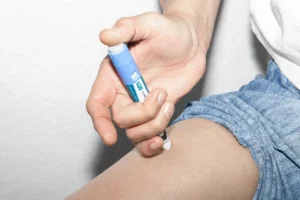

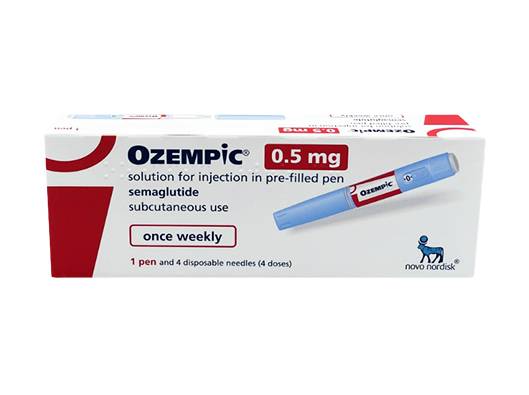
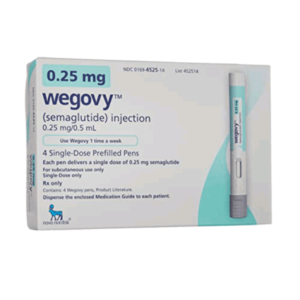
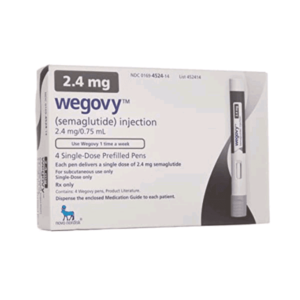

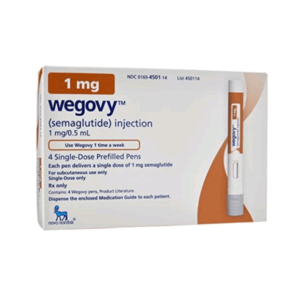
Beoordelingen
Er zijn nog geen beoordelingen.